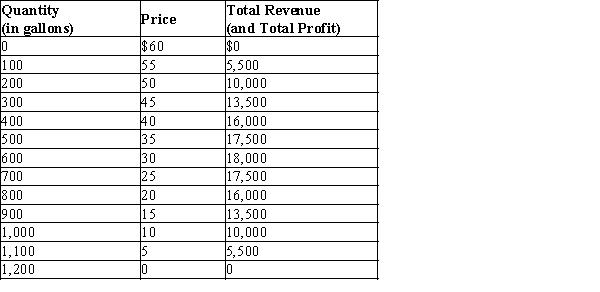Table 17-1
Imagine a small town in which only two residents, Rochelle and Alec, own wells that produce safe drinking water. Each week Rochelle and Alec work together to decide how many gallons of water to pump. They bring the water to town and sell it at whatever price the market will bear. To keep things simple, suppose that Rochelle and Alec can pump as much water as they want without cost so that the marginal cost of water equals zero. The town's weekly demand schedule and total revenue schedule for water is shown in the table below: 
-Refer to Table 17-1. If the market for water were perfectly competitive instead of monopolistic, how many gallons of water would be produced and sold?
Definitions:
Selling and Administrative Expenses
Costs incurred by a company not directly tied to the production of goods or services, including sales, marketing, and administrative functions.
Units
The basic measure of quantity in accounting, production, or inventory, often representing a single item or instance of a product.
Spending Variance
The difference between the actual amount spent and the budgeted or forecasted amount for a particular account or period.
Occupancy Expenses
Costs associated with occupying a space, such as rent, utilities, and property taxes.
Q87: Refer to Table 17-1. Suppose the town
Q118: When a group of firms acts in
Q179: Refer to Table 17-13. If both stores
Q216: To function as a monopoly, OPEC and
Q220: Refer to Table 17-20. If Maddie chooses
Q224: Refer to Table 17-17. Which of the
Q384: In a game, a dominant strategy is<br>A)the
Q411: Refer to Table 17-12. If there are
Q426: Refer to Table 18-A. The price of
Q576: Refer to Table 18-7. What is the